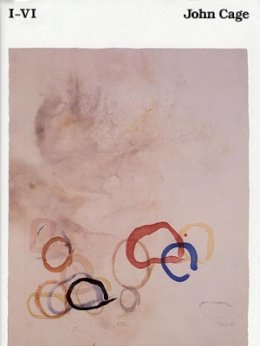
Without doubt the most influential American composer of the last half century, John Cage has had an enormous impact not only on music but on art, literature, the performing arts, and aesthetic thought in general. His insistent exploration of “nonintention” and his fruitful merging of Western and Eastern traditions have made him a powerful force in the world of the avant-garde.
There have never been lectures like these: delivered at Harvard in 1988–89 as the Charles Eliot Norton Lectures, they were more like performances, as the audience heard them. Cage calls them “mesostics,” a literary form generated by chance (in this case computerized I-Ching chance) operations. Using the computer as an oracle in conjunction with a large source text, he happens upon ideas, which produce more ideas. Chance, and not Cage, makes the choices and central decisions. Such a form is rooted, Cage tells us in his introduction, in the belief that “all answers answer all questions.”
Acting as a kind of counterpoint to the six texts here are transcripts (edited by Cage) of the provocative question-and-answer seminars that followed each presentation. Included with the book are two audiocassettes, one of Cage reading a mesostic (IV), allowing the listener to experience it as it was delivered, and one with a lively selection from the question-and-answer seminars that conveys the flavor of the event. The illustrations consist of fifteen different chance-determined prints from a single negative by Robert Mahon of the first autograph page of Cage’s Sixteen Dances (1951).
I–VI is, in short, an experience of John Cage, where silences become words and words become silences, in arrangements that will disconcert and exercise our minds.
Product Details
Reviews for I-VI
John Rockwell
New York Times Book Review
There is no lecturer here, nor exactly an artistic artificer in the old romantic (or Platonic) sense. Rather there is an inventor of a procedure designed to highlight the complexities of modern life and to accommodate us to our embodied ears in an act of liberation from concepts and impositions of all kinds.
Daniel Herwitz
Journal of Aesthetics and Art Criticism
For his Norton lectures, Cage continued writing mesostics; but to the earlier collection of ten key epithets, he has added five more: variable structure, nonunderstanding, contingency, inconsistency, performance. Instead of writing out of his own head (or drawing upon a single literary source), he now selects words from several disparate sources: Ludwig Wittgenstein, Marshall McLuhan, Buckminster Fuller’s followers, daily newspapers during the summer of 1988… The result is a more expansive text that not only befits Cage’s taste for heady ideas…but encompasses the whole world, in part because it draws upon writings with global range, its theme thus becoming meditations on a scale at once personal and sociopolitical… Very much like Finnegans Wake, Cage’s I–VI is at once unreadable and rereadable… I–VI is his finest poem, a major poem in a unique style, surely among the best American epic poems of the post–World War II period.
Richard Kostelanetz, Notes and The Journal of Art [A] handsome, impressive…volume… Cage once again demonstrates that the free play of his associations—paradoxically, filtered and channeled through a methodology—can produce a uniquely moving experience. Each of the three entryways into the experience (written text, recorded reading, question session) offers special insights into the whole. The complete package is a delight.
Choice
